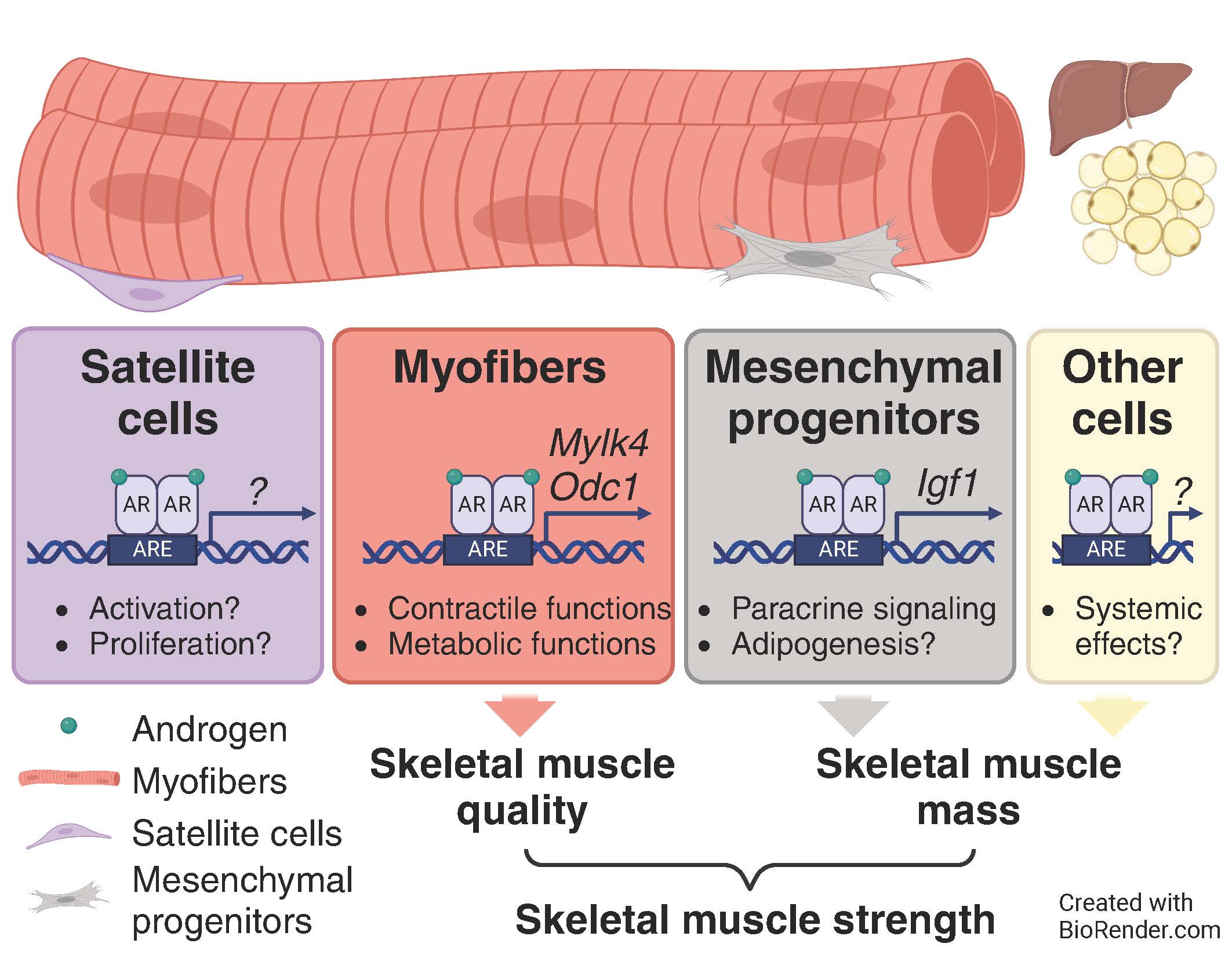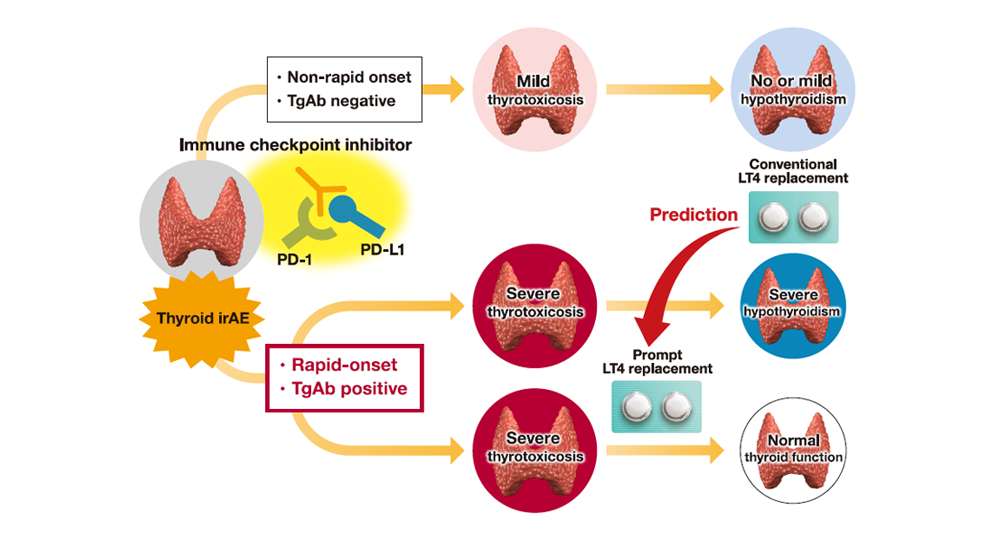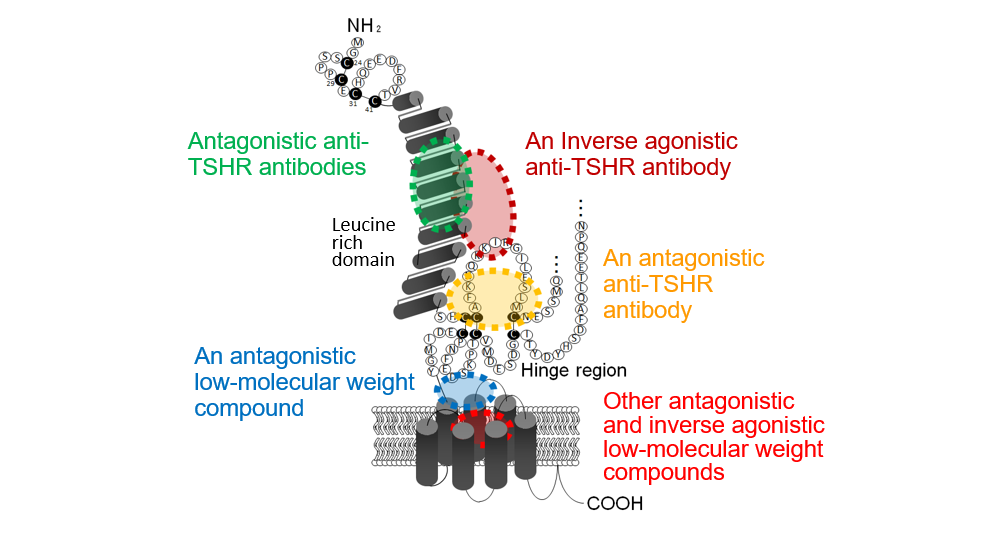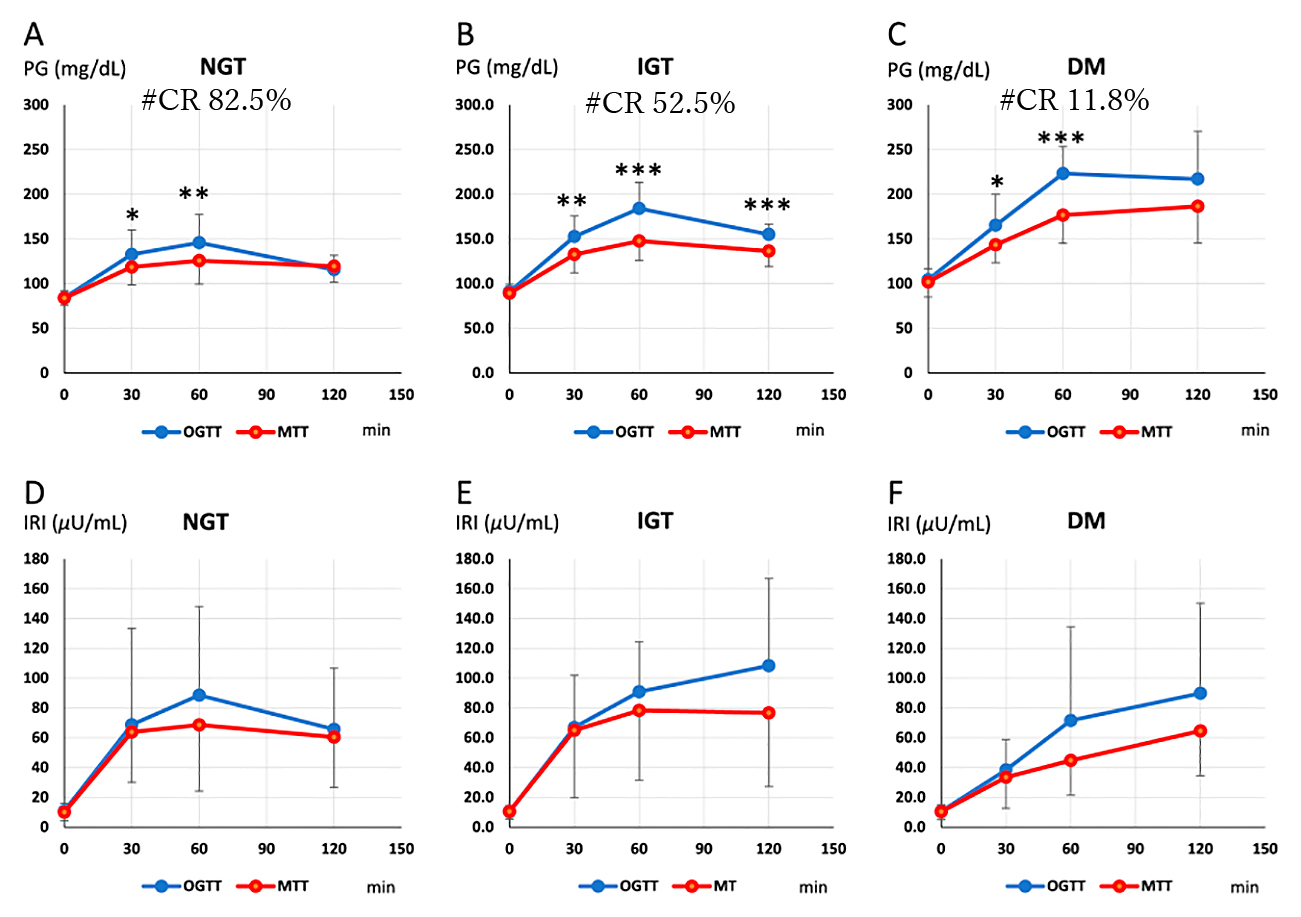Volume 72 (2025) Issue 4
Ghrelin–LEAP2 interactions along the stomach–liver axis
Katsuya Sakai, Yuki Nakazato, Yuki Shiimura, Weidong Zhang, Masamitsu Nakazato
Recommendation from the Editor in Chief
There are examples where distinct two peptide ligands respectively act as an agonist and antagonist on the same receptor. To my knowledge, the best-known one is related with the story that alpha-MSH and agouti-related peptide (AgRP) act on the melanocrtin-4 receptor (MC4R) as an agonist and antagonist, thereby minutely regulating appetite and body weight. In this issue, Dr. Katsuya Sakai and Professor Masamitsu Nakazato, a world-renowned physician scientist on research of orexigenic hormone ghrelin, provide us with well-organized, fabulous review article focusing on the dynamic interaction between ghrelin and LEAP-2 (liver-expressed antimicrobial peptide 2) in terms of stomach-liver axis-driven appetite control. Indeed, ghrelin and LEAP-2 respectively act as an agonist and antagonist on the same receptor, GHSR (growth hormone secretagogue receptor). Our editorial team has a firm belief that all readers are surely motivated by the real deal of authentic endocrinology and cutting-edge medicine on GPCR signal transduction in this article.
Volume 72 (2025) Issue 3
Epidermal growth factor receptor contributes to indirect regulation of skeletal muscle mass by androgen
Tomoya Onishi, Hiroshi Sakai, Hideaki Uno, Iori Sakakibara, Akiyoshi Uezumi, Mamoru Honda, Tsutomu Kai, Shigeki Higashiyama, Noriyoshi Miura, Tadahiko Kikugawa, Takashi Saika, Yuuki Imai
Recommendation from the Editor in Chief
Reflecting an expeditious increase in elder patients with sarcopenia notably in industrialized countries, endocrinologic research on molecular basis of muscle mass and strength has attracted great attention in both academic and clinical fields. In this issue, Dr. Tomoya Onishi, Professor Yuuki Imai and colleague provide fresh insight into unexpected interplay between androgens and epidermal growth factor receptor (EGFR) EGFR in the molecular pathophysiology of shrinkage of muscle mass. This excellent article provides all endocrinologists with updated viewpoint of sarcopenia science.
Volume 72 (2025) Issue 2
Role of radiologists in the diagnosis and management of adrenal disorders
Sota Oguro, Hiromitsu Tannai, Hideki Ota, Kazumasa Seiji, Hiroki Kamada, Yoshitaka Toyama, Kei Omata, Yuta Tezuka, Yoshikiyo Ono, Fumitoshi Satoh, Sadayoshi Ito, Tetsuhiro Tanaka, Hideki Katagiri, Kei Takase
Recommendation from the Editor in Chief
Radiographic diagnosis and therapeutic approach are requisite for clinics of endocrinology, especially for a series of adrenal diseases. From the unique standpoint of proficient radiologist, Dr. Oguro and colleague contribute a comprehensive and extensive review article focusing on this issue with a particular emphasis on segmental adrenal venous sampling (SAVS) and radiofrequency ablation for the treatment of unilateral primary aldosteronism (PA), shedding light on the importance of collaborative approach toward intractable endocrine diseases.
Recommendation from the Editor in Chief
It has been well recognized that inorganic iodine persistently suppresses thyroid function in some cases with Graves’ disease, and can be introduced as an alternative for patients with adverse events on antithyroid drugs. However, scientific bases are not fully elucidated and still remains empirical.
In this issue, Dr. Natsuko Watanabe, an editorial board member of Endocrine Journal (EJ), contributes a well-organized, insightful narrative review focusing on this issue. The editorial team of EJ has a firm belief that all readers will be fascinated by an implicative “historical tale” around the relation between iodine and thyroid.
Volume 71 (2024) Issue 12
Osilodrostat treatment in patients with Cushing’s disease of Asian or non-Asian origin: a pooled analysis of two Phase III randomized trials (LINC 3 and LINC 4)
Akira Shimatsu , Beverly MK Biller, Maria Fleseriu, Rosario Pivonello, Eun Jig Lee, Rattana Leelawattana, Jung Hee Kim, Rama Walia, Yerong Yu, Zhihong Liao, Andrea Piacentini, Alberto M Pedroncelli, Peter J Snyder
Recommendation from the Editor in Chief
Ethnicity-dependent differences in drug responsiveness have attracted broad attention also in endocrinological science. In this issue, Dr. Akira Shimatsu and Professor Beverly MK Biller at Massachusetts General Hospital, an active member of international honorary editors of Endocrine Journal, contribute an insightful original article focusing on ethnicity-related impact of oral 11beta-hydroxylase inhibitor, Osilodrostat between patients with Cushing’s disease of Asian and non-Asian origin. In comparison with non-Asians, Asian patients required apparently-lower doses of the drug to achieve clinical benefits, whereas adverse events related with hypocortisolism were manifested in Asians. As authors stated, this study is the first to compare the impact of drug therapy for patients with Cushing’s disease between Asian and non-Asian origin. Although ethnicity-dependent differences in bioavailability of the drug would be involved, elucidation of the entire picture is strongly anticipated.
Volume 71 (2024) Issue 11
Snap diagnosis of fulminant type 1 diabetes by the normalized glucose/HbA1c ratio
Jun-Ichiro Mori, Takahiro Miyakoshi, Hanae Yuzuriha, Teruki Kondo, Eita Nishimori, Motoji Naka, Ai Sato, Mitsuhisa Komatsu, Koh Yamashita, Toru Aizawa
Recommendation from the Editor in Chief
It is well recognized that patients with fulminant type 1 diabetes (FT1D), originally characterized by Professor Imagawa and Hanafusa et al, require expeditious diagnosis and successive intensive care. Inspired by the notion that incidence of FT1D in Caucasians has been extremely rare as compared to Asians, Dr. Mori and colleague propose the index beneficial for the snap diagnosis of FT1D in the November issue. Such a valuable suggestion is strongly anticipated to save lives of previously-undiagnosed FT1D worldwide.
Volume 71 (2024) Issue 10
Cushing’s disease with twin pregnancy and diabetes mellitus: a case report and literature review
Hideyasu Asai, Ikuo Yamamori, Shigeru Hagimoto, Kyoichi Okumura, Koki Sakakibara
Recommendation from the Editor in Chief
Dr. Hideyasu Asai and colleague report in the October issue an extremely rare case of a pregnant woman with twins suffering from Cushing’s disease, exemplifying hypercortisolism, hypothyroidism and diabetes. After the successful spontaneous vaginal delivery, she received a transsphenoidal surgery, resulting in partial mitigation of hypercortisolism and complete normalization of thyroid function, possibly via the cancellation of cortisol-driven suppression of TSH as well as conversion of T4 to T3. This in-depth case report on a rare situation coupled with pregnancy and hyper ACTH in circulation provides us with fresh insight into elaboration of endocrine networks throughout the body.
Volume 71 (2024) Issue 9
Biological roles of growth hormone/prolactin from an evolutionary perspective
Yasumasa Iwasaki, Mitsuru Nishiyama, Dylan Corcoran, Takako Araki
Recommendation from the Editor in Chief
It is well known that growth hormone (GH) and prolactin (PRL) share a series of close similarities in molecular developmental, structural, intracellular signaling, physiological and pathophysiological aspects. In the September issue, Professor Yasumasa Iwasaki, one of the Japan’s proud scholars in endocrinologic science, provides us with truly fabulous review article particularly focusing on the unique profile of GH and PRL as “metabo”kines with a perspective of evolutionary endocrinology. Our editorial team has a firm belief that all readers will definitely be fascinated and moved by the full of academic incense contained.
Recommendation from the Editor in Chief
To further enhance the success rate of fertility therapy, it is critical to understand the elaborate molecular mechanisms for regeneration of endometrium, which are extremely unique regenerative tissue in human body. In the August issue, Dr. Hiroshi Uchida provides us with an exciting review particularly focused on the endocrinologic comparison between epithelial to mesenchymal transition (EMT) in common wound healing and endometrial tissue remodeling in the sexual cycle. This excellent article provides all endocrinologists with invaluable and updated insight into menstruation and implantation in humans.
Recommendation from the Editor in Chief
Achondroplasia (ACH) has long been an extremely intractable disease in children characterized by both rhizomelic shortened limbs and considerable shot stature. In the July issue, a world-renowned endocrinologist, Dr. Keiichi Ozono and colleague provide an inspirational and cutting-edge review on the update of molecular mechanisms and brand-new therapeutic modalities for ACH. Our editorial team has a firm belief that such a “making the impossible possible” story in the translational research of endocrinology is a must-read for all readers in Endocrine Journal.
Recommendation from the Editor in Chief
As well known, the pituitary gland is composed of two distinct parts originated from both adenohypophyseal placode and neuroectoderm. For most of endocrinologists, however, not much is known about the recent research progress in this field. Dr Yukio Kato and Dr Takako Kato seasonably provide a fascinating and updated overview on the molecular development of pituitary gland with a cutting-edge insight into cellular and endocrinologic mechanisms.
Recommendation from the Editor in Chief
It is widely recognized that androgens play a crucial role not only in developing secondary sexual characteristics in men but in exerting protein anabolic effects as anabolic steroids. In this issue, Professor Yuuki Imai and Dr. Hiroshi Sakai contribute a sophisticated and insightful review on cell-specific functions of androgen receptor within skeletal muscles, particularly in satellite cells, myofibers and mesenchymal progenitors. A variety of indirect effects of androgens via extra-muscle tissue on skeletal muscle are also impressively highlighted.
Recommendation from the Editor in Chief
Fibroblast growth factor 23 (FGF23) plays a critical role in regulating circulating phosphate level. To date, however, mechanisms whereby bone senses the change of blood phosphate level and regulates the production of FGF23 have been poorly elucidated. In this issue, Dr. Yuichi Takashi contributes an insightful review article focusing on such long-lasting enigmas. Our editorial team is sure that readers will be fascinated by the profound world of phosphate homeostasis via unique endocrine systems.
Volume 71 (2024) Issue 3
Lung adenocarcinoma metastasis within a pituitary neuroendocrine tumor: a case report with review of literature
Koji Suzuki, Shigeyuki Tahara, Yujiro Hattori, Shinichiro Teramoto, Eitaro Ishisaka, Chie Inomoto, Robert Yoshiyuki Osamura, Akio Morita, Yasuo Murai
Recommendation from the Editor in Chief
Dr. Koji Suzuki and colleague report in the March issue an extremely rare case of metastatic lung adenocarcinoma within a gonadotroph pituitary neuroendocrine tumor (PitNET), representing a considerably expeditious progression of a variety of neurological symptoms. This excellent report provides us with invaluable insight into diagnosis and therapeutics for coexisting primary and metastatic tumors in pituitary gland.
Recommendation from the Editor in Chief
As well known, endocrine organs including pituitary gland, adrenal gland and pancreatic islet of Langerhans et cetera consist of heterogenous cells, and pathophysiological interplay among hormone-producing cells and non-hormone-producing cells within tissue is crucial, at least in part, for molecular basis of a variety of endocrine diseases. In the February issue, Dr. Ryusaku Matsumoto and Takuya Yamamoto provide a comprehensive, fascinating review article focusing on the update of single-cell and spatial transcriptomics in endocrine research. Our editorial team has a firm belief that this review is a must-read for all dedicating clinicians and scientists on endocrinology.
Recommendation from the Editor in Chief
It is widely recognized that some cases of immune-related adverse events (irAEs) caused by immune checkpoint inhibitors (ICIs) result in life-threatening consequences including adrenal crisis and fatal diabetic ketoacidosis. In this issue, Dr. Tomoko Kobayashi and colleague contribute an insightful and well-organized review article on promising biomarkers to predict the onset of endocrine irAEs, particularly underscoring the mechanism-based management strategies and future prospect for pituitary and thyroid irAEs.
Volume 70 (2023) Issue 12
Relationship between Ca2+ and cAMP as second messengers in ACTH-induced cortisol production in bovine adrenal fasciculata cells
Masahiko Kutsukake, Naoko Kuwabara, Yoshikazu Miyate, Kenzo Kudo, Shoko Goto, Eiichi Taira, Eiichi Tachikawa
Recommendation from the Editor in Chief
It is well known that both Ca 2+ and cAMP play critical roles in ACTH-driven cortisol production by adrenal fasciculate cells. However, the division of role for Ca 2+ and cAMP in this paradigm still remains obscure. In the December Issue, Dr. Masahiko Kutsukake and colleague elegantly unraveled such a long-standing enigma via sophisticated cellular experiments, demonstrating that cortisol production under steady state is preferentially mediated by Ca 2+, but cAMP also participates under stressful conditions where ACTH demand is increased to adapt exaggerated stress.
Volume 70 (2023) Issue 10
Prediction-based prompt levothyroxine replacement to prevent a hypothyroid state after immune-related adverse events involving the thyroid gland
Ichiro Yamauchi, Takuro Hakata, Taku Sugawa, Daisuke Kosugi, Haruka Fujita, Kentaro Okamoto, Yohei Ueda, Toshihito Fujii, Daisuke Taura, Norio Harada, Nobuya Inagaki
Recommendation from the Editor in Chief
As well known, immune checkpoint inhibitors (ICIs) sometimes cause immune-related adverse events in the thyroid gland (thyroid irAEs). Dr. Ichiro Yamauchi and colleague conducted an elaborate retrospective cohort study demonstrating that patients with rapid-onset severe thyrotoxicosis as well as with positive TgAbs titers were highly likely to develop subsequent hypothyroidism. This study provides us with a message that expeditious replacement of levothyroxine is a crucial precaution against severely hypothyroid state.
Recommendation from the Editor in Chief
Complexity in action-specific resistance and hypersensitivity of hormones has long been recognized throughout the body. In particular, however, underlying molecular mechanisms of selective insulin resistance in liver are not yet fully elucidated. In the September issue, Dr. Takumi Kitamoto and Professor Domenico Accili provide an elegant, comprehensive review article on such a longstanding enigma.
Recommendation from the Editor in Chief
Unravelling the complexed molecular pathophysiology of diabetic nephropathy is no doubt a key to establish cutting-edge therapeutics against end stage renal diseases (ESRDs) and cardiovascular events. In this issue, Dr. Keiichiro Matoba contributes an elegant article particularly focusing on the promising potential of Rho-associated, coiled-coil-containing protein kinase (ROCK) for the treatment of diabetic nephropathy. ROCK signaling is known to exaggerate in the diabetic kidney. Of note, ROCK1 blunts AMPK signaling, thereby hampering mitochondrial function, while ROCK2 attenuates PPARα signaling, resulting in the decrease in fatty acid oxidation. Collectively, his work does shed light on the novel approach toward the diabetic nephropathy via kidney-specific inhibition of ROCK signaling.
Recommendation from the Editor in Chief
Age-related testosterone decline, also known as late-onset hypogonadism (LOH), is tightly linked with a wide variety of aging-related pathophysiology including sarcopenia, coronary arterial disease, arteriosclerosis, obesity disease, type 2 diabetes mellitus, mental health disorders and cognitive impairment. In this issue, Professor Hisamitsu Ide timely contributes an insightful and well-organized review article on testosterone with a specific view point of clinical and molecular endocrinology, underscoring the huge impact of testosterone on maintenance of male health in the super-aging society.
Recommendation from the Editor in Chief
Immune-related adverse effects observed in a variety of endocrine organs caused by immune checkpoint inhibitors (ICIs) afresh underscore the impact of onco-immuno-endocrinology on the pathophysiology and pathogenesis of paraneoplastic endocrine syndrome. In this issue, Professor Yutaka Takahashi contributes a terrific, well-organized article on the recent research progress particularly in the category of paraneoplastic autoimmune hypophysitis including anti-PIT-1 hypophysitis, isolated ACTH deficiency and ICI-related hypophysitis.
Volume 70 (2023) Issue 5
Glucose and lipid metabolisms in human endometrial stromal cells during decidualization
Isao Tamura, Amon Shiroshita, Taishi Fujimura, Yumiko Tanaka-Doi, Yuichiro Shirafuta, Toshiaki Taketani, Shun Sato, Norihiro Sugino
Recommendation from the Editor in Chief
Reproductive endocrinology provides us with a lot of tips in a various area of medical science. In this issue, Dr. Tamura and colleague contribute an insightful review article focusing on glucose and lipid metabolism in human endometrial stromal cells during the course of decidualization. To effectively supply energy for embryo, human endometrial stromal cells aggressively ingest fuel via GLUT1 and VLDL receptor under the transcriptional control and epigenetic modification involved in C/EBP beta, p300 and WT1. Such a fashion would be reminiscent, at least in part, of fuel metabolism commonly seen in cancer cells. It is also anticipated that energy metabolism-based unique approach in this article opens a fresh avenue for cutting edge medicine and therapeutics on incomplete implantation or infertility.
Recommendation from the Editor in Chief
As well known, comparative endocrinology has long provided deep insight into pathophysiology and molecular basis of a variety of human endocrinologic diseases. In this issue, by use of a small fish model, Dr. Yoshitaka Oka contributes an extensive, well-organized article on the recent research progress in neuroendocrine regulation of reproduction by GnRH neurons, providing us with an invaluable perspective for cutting-edge area of reproductive endocrinology in humans.
Volume 70 (2023) Issue 3
Mineralocorticoids induce polyuria by reducing apical aquaporin-2 expression of the kidney in partial vasopressin deficiency
Junki Kurimoto, Hiroshi Takagi, Takashi Miyata, Yohei Kawaguchi, Yuichi Hodai, Tetsuro Tsumura, Daisuke Hagiwara, Tomoko Kobayashi, Yoshinori Yasuda, Mariko Sugiyama, Takeshi Onoue, Shintaro Iwama, Hidetaka Suga, Ryoichi Banno, Takeshi Katsuki, Fumiaki Ando, Shinichi Uchida, Hiroshi Arima
Recommendation from the Editor in Chief
It is well recognized that a line of symptoms of neurohypophyseal diabetes insipidus (NDI), also known as arginine vasopressin (AVP) deficiency, are masked under the condition of adrenal insufficiency. However, molecular mechanisms whereby polyuria manifests after the administration of glucocorticoids in patients with masked NDI have not been fully elucidated. Kurimoto J and colleague elegantly solved this long-lasting enigma via comprehensive analyses including patients with masked NDI as well as murine model of familial NDI. They provide a convincing proof that mineralcorticoids directly attenuate the expression of aquaporin-2 in the apical membrane of collecting duct, thereby leading to the increase in urine volume in patients with NDI.
Volume 70 (2023) Issue 1
Clinical characteristics and efficacy of pioglitazone in a Japanese patient with familial partial lipodystrophy due to peroxisome proliferator-activated receptor γ gene mutation
Toru Iizaka, Eriko Kodama, Kentaro Mikura, Tatsuya Iida, Hideyuki Imai, Mai Hashizume, Yasuyoshi Kigawa, Chiho Sugisawa, Rie Tadokoro, Kei Endo, Fumiko Otsuka, Masayo Isoda, Ken Ebihara, Shun Ishibashi, Shoichiro Nagasaka
Recommendation from the Editor in Chief
To date, familial partial lipodystrophy (FPLD) has been known to consist of seven types, and FPLD type 3 is a rare autosomal dominant genetic disorder caused by mutations of peroxisome proliferator-activated receptor γ gene. In this issue, Dr. Iizaka and colleague report the first pedigree of FPLD 3 in Japanese exemplifying prolonged insulin resistant diabetes mellitus, liver steatosis and hypertriglyceridemia with a relatively low degree of BMI and percentage of body fat. For all endocrinologists, attention should be paid to avoid overlooking lipodystrophy syndromes.
Recommendation from the Editor in Chief
Molecular research on agonists / antagonists / inverse agonists in a variety of G-protein coupled receptors (GPCRs) has long attracted robust attention of endocrinologists. In this issue, Dr. Nagayama and Dr. Nishihara contributes an encyclopedic, well-organized article on the update of antagonists / inverse agonists research around the thyrotropin receptor (TSHR), providing us with promising therapeutic potential for Graves’ hyperthyroidism, non-autoimmune hyperthyroidism, thyroid cancer and resistance to thyroid hormone.
Recommendation from the Editor in Chief
It has long been recognized that uncontrolled high blood pressure, dysmetabolism of glucose and lipids, and sustained inflammation and fibrosis are involved in the pathophysiology and progression of diabetic kidney disease (DKD) in an extremely complexed manner. It is therefore exactly a herculean issue to accurately identify patients with higher risks than we would imagine for end-stage renal diseases (ESRDs). In the October issue, Dr. Xu Ning and colleague provide an attractive review article focusing on potentials of mesenchymal stem cells (MSCs) for the treatment of such an intractable medical condition.
Recommendation from the Editor in Chief
Epigenome-based drugs such as inhibitors against DNA methyltransferases (DNMTs) and histone deacetylase (HDACs) have long been employed for the treatment of a variety of malignancy and pre-cancer status. In this issue, Dr. Rie Hagiwara and colleague provide a convincing data set of in vitro experiments demonstrating a selective HDAC6 inhibitor, tubastatin A substantially suppresses the growth of as well as the ACTH secretion from a murine corticotroph cell line, AtT-20. The present study may open a fresh avenue for brand-new therapeutics in humans on pituitary neuroendocrine tumors including Cushing’s disease.
Recommendation from the Editor in Chief
Science and clinics on phosphate homeostasis are no doubt an authentic, royal road to endocrinology. As most of readers of Endocrine Journal well recognize, basic scientists and endocrinologists in Japan have made a huge contribution to the molecular medicine on fibroblast growth factor 23 (FGF 23) in this academic field. To STATE-OF-THE-ART REVIEW IN ENDOCRINOLOGY in this issue, Dr. Michigami contributes an extensive, well-organized article on the recent research progress in phosphate homeostasis and related disorders with a particular emphasis on FGF 23, providing us with an invaluable perspective for cutting-edge area of bone-mineral endocrinology.
Recommendation from the Editor in Chief
Dynamic remodeling of adipose tissue plays a critical role in the pathophysiology of obesity disease. In this article, Dr. Yutaka Hasegawa elegantly updates the research on the molecular mechanism whereby adipocytes interact with non-adipocytes during the course of adipose dysfunction and fibrosis in obesity. This review does provide us with invaluable perspective for endocrinology-based obesity science.
Volume 69 (2022) Issue 6
Effects of a new 75 g glucose- and high fat-containing cookie meal test on postprandial glucose and triglyceride excursions in morbidly obese patients
Yukako Yamamoto, Yuki Ozamoto, Masaki Kobayashi, Yuji Tezuka, Choka Azuma, Osamu Sekine, Jun Ito-Kobayashi, Miki Washiyama, Yasumitsu Oe, Masanori Iwanishi, Takeshi Togawa, Akeo Hagiwara, Tadahiro Kitamura, Akira Shimatsu, Atsunori Kashiwagi
Recommendation from the Editor in Chief
It has been highlighted that postprandial hyperinsulinemia-associated hypoglycemia sometimes happens in patients with morbid obesity after metabolic surgeries. In the present study, Dr. Yukako Yamamoto and her colleague provide a line of convincing data demonstrating that a 75 g glucose- and high fat-containing cookie meal test is useful in severely obese subjects to precisely evaluate glucose intolerance and postprandial dyslipidemia without occurrence of hyperinsulinemia-associated hypoglycemia. The cookie meal test may open a fresh avenue to conveniently monitor fuel homeostasis in the course of multidisciplinary therapies for obese-diabetic patients.
Recommendation from the Editor in Chief
A variety of factors including dysregulation of renin-angiotensin-aldosterone system in both systemically and locally are well known to affect the progression of diabetic nephropathy (DN).To our surprise, however, the possible association between the plasma renin activity (PRA) and renal outcomes in patients with DN still remains obscure. In the present article, Dr. Kazuyoshi Kuma and colleague elegantly addressed such a unsolved question in a 2 year-prospective study, highlighting that low in PRA is an independent risk for the progression of DN in a Japanese cohort.
Volume 69 (2022) Issue 4
Burden of disease of X-linked hypophosphatemia in Japanese and Korean patients: a cross-sectional survey
Nobuaki Ito, Hee Gyung Kang, Yayoi Nishida, Ayla Evins, Alison Skrinar, HaeIl Cheong
Recommendation from the Editor in Chief
X-linked hypophosphatemia (XLH) in known to substantially secrete FGF23, thereby causing renal phosphate loss, chronic hypophosphatemia and a variety of involvement in skeletal system. However, the reality in clinics has not been fully examined. In the present study, via the online questionnaire methods, Ito N et al. comprehensively evaluate the current status and health-related quality of life in patients with XLH living in Japan and Korea, providing us with the latest knowledge and insight into XHL.
Volume 69 (2022) Issue 3
DNA methylation level of the gene encoding thioredoxin-interacting protein in peripheral blood cells is associated with metabolic syndrome in the Japanese general population
Mirai Yamazaki, Hiroya Yamada, Eiji Munetsuna, Keisuke Maeda, Yoshitaka Ando, Genki Mizuno, Ryosuke Fujii, Yoshiki Tsuboi, Koji Ohashi, Hiroaki Ishikawa, Shuji Hashimoto, Nobuyuki Hamajima, Koji Suzuki
Recommendation from the Editor in Chief
Convincing and conveniently-evaluated molecular biomarkers for prediction and assessment of metabolic syndrome are warranted to realize precision health as well as precision medicine in lifestyle-related diseases. In the present study, Yamazaki M and colleague provide intriguing evidence that level of DNA methylation of the gene encoding thioredoxin-interacting protein, a key inhibitor of cellular oxidation, is significantly decreased in peripheral blood cells from subjects with metabolic syndrome. Further extensive studies are strongly expected to see whether such a status of hypomethylation is clinically relevant to the extent of systemic oxidative stress and would be reversible in response to a line of lifestyle modifications or metabolic surgeries.
Recommendation from the Editor in Chief
In this issue, Kamma H and colleague highlight the update of general rules for the description of thyroid cancer proposed by Japanese Society of Thyroid Pathology and Japan Association of Endocrine Surgery. This article is strongly expected to lay a brand-new cornerstone in transferring Japanese diagnostic standard on thyroid cancer for the world.
Recommendation from the Editor in Chief
In this issue, Sugawara L and colleague provide a line of convincing results of genetic analyses on neurophysin II (NPII) in a pedigree of neurohypophyseal diabetes insipidus.
» Archives










































